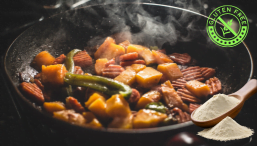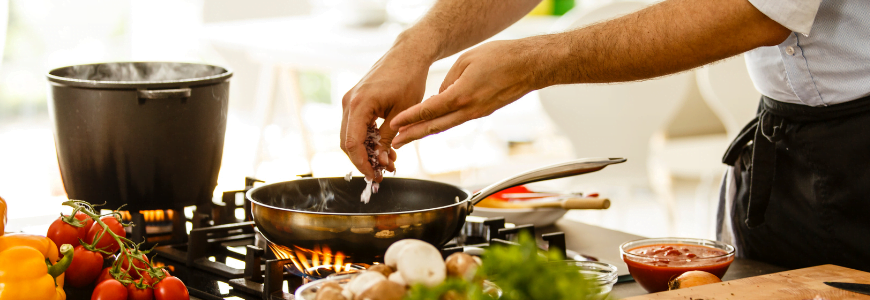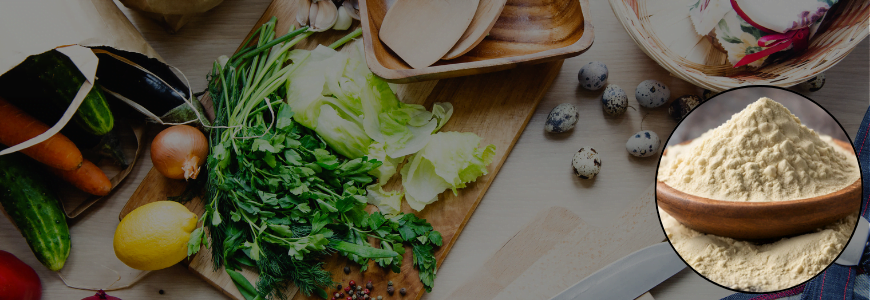In the bustling world of home kitchens, where culinary adventures unfold, even the most seasoned chefs can encounter unexpected challenges. One such unsung hero that often comes to the rescue is guar gum. Derived from guar beans, this natural thickening agent is a versatile ingredient that can transform your cooking and baking experiences. In this blog, we’ll explore various Troubleshooting with Guar Gum scenarios and demonstrate how guar gum can be the unpraised hero in your kitchen.

Understanding Guar Gum:
Before delving into troubleshooting, let’s get familiar with guar gum. Derived from guar beans, this powder is renowned for its ability to enhance texture, viscosity, and shelf life in various food products. It’s a common ingredient in both commercial and home kitchens, valued for its thickening and stabilizing properties. Guar gum is gluten-free, making it an excellent option for those with dietary restrictions. As we dive into troubleshooting with guar gum, keep in mind its ability to improve viscosity, prevent separation, and add structure to your culinary creations.
Now, let’s jump into some kitchen challenges and discover how guar gum can be the secret ingredient you need.
- Soggy Bottoms in Baking: Soggy pie or tart crusts can be a real dampener on your baking adventures. Troubleshooting with guar gum begins here, acting as a moisture barrier that prevents excess water from compromising your pastry. Gradually incorporate guar gum into your crust recipe until you strike the perfect balance, ensuring a crisp and delightful foundation for your baked goods.
- Gluten-Free Baking Woes: Gluten-free baking presents its own set of challenges, with many recipes lacking the elasticity and structure that gluten provides. Guar gum can mimic some of these properties, adding the necessary binding and thickening to gluten-free flours. When experimenting with gluten-free recipes, consider incorporating guar gum to improve the texture and mouthfeel of your baked goods.
- Sauce Separation Issues: Whether it’s a creamy pasta sauce or a savory gravy, sauce separation can be a common frustration. Guar gum acts as an emulsifier, helping to blend and stabilize ingredients, preventing unsightly separation. To rescue a broken sauce, sprinkle a small amount of guar gum while whisking continuously. Remember, a little goes a long way, so start with a pinch and adjust accordingly.
- Ice Cream Crystallization: Homemade ice cream enthusiasts know the disappointment of finding ice crystals in their frozen creations. Guar gum plays a crucial role in preventing crystal formation by improving the overall texture and creaminess of the ice cream. When making your favorite frozen treats, incorporate guar gum into the mix to achieve that perfect scoopable consistency.
- Lumpy Gravies and Sauces: Lumps in gravies and sauces are a common kitchen mishap. Guar gum can save the day by smoothing out the texture and preventing clumping. To avoid lumps, whisk guar gum into a small amount of cold liquid before incorporating it into your hot sauce or gravy, ensuring even distribution and a velvety-smooth finish.
- Improving Gluten-Free Bread: Troubleshooting with guar gum becomes essential as it mimics some of the binding and thickening properties of gluten. Gluten-free bread often struggles with achieving the right structure and softness. Guar gum acts as a binder, helping gluten-free dough rise and creating a better crumb structure. Add a small amount of guar gum to your gluten-free bread recipes to enhance the texture and make your loaves more palatable.
- Egg Replacement in Vegan Cooking: This tricks of troubleshooting with guar gum works well in recipes where eggs usually act as a binder, like in vegan cakes, cookies, and pancakes. Guar gum can be a valuable ally in vegan cooking, particularly as an egg replacement. When combined with water, guar gum forms a gel-like substance that mimics the binding properties of eggs. Use this mixture in recipes where eggs serve as a binding agent, such as in vegan cakes, cookies, and pancakes.
- Stabilizing Whipped Cream: Whipped cream can be a delicate creation that often loses its structure too quickly. Troubleshooting with guar gum involves stabilizing whipped cream. Guar gum allows it to hold its shape for a more extended period. Add a pinch of guar gum while whipping your cream to ensure a firm and stable consistency that won’t wilt over time.
- Optimizing Low-Fat Salad Dressings: Creating low-fat salad dressings often poses the challenge of achieving a creamy texture. Guar gum can be the key ingredient in such scenarios, helping to thicken and stabilize the dressing without the need for excessive amounts of oil. Troubleshooting with guar gum can give you an experiment with guar gum to find the perfect balance of creaminess and flavor in your favorite salad dressings.
- Improving the Texture of Gluten-Free Pasta: Gluten-free pasta can sometimes lack the desired chewiness and elasticity. Incorporating guar gum into your gluten-free pasta dough can enhance its texture, making it more reminiscent of traditional wheat-based pasta. Enjoy your favorite pasta dishes without compromising on taste and mouthfeel.
- Creating Creamy Soups: Creamy soups often suffer from unwanted separation or a thin consistency. Troubleshooting with guar gum allows you to achieve that desired velvety texture. Whisk guar gum into your soup to thicken it without altering the flavor, ensuring a satisfying bowl every time.
Conclusion
In the vast landscape of kitchen troubleshooting, guar gum emerges as a versatile and reliable companion and troubleshooting with guar gum plays a crucial role especially in the kitchen. Whether you’re battling with baking mishaps, sauce separations, or the challenges of gluten-free cooking, guar gum has the potential to transform your culinary experiences. Embrace this natural thickening agent as your secret weapon in the kitchen, and let it pave the way for smoother, more successful cooking and baking adventures. With guar gum by your side, you’re ready to tackle any kitchen challenge that comes your way. Happy cooking!
FAQs:
1. Can I substitute guar gum with other thickeners in recipes?
While possible, guar gum has unique properties; substitutions may impact texture and consistency.
2. How does guar gum contribute to gluten-free bread making?
Guar gum improves the elasticity and structure of gluten-free dough, resulting in better bread texture.
3. What’s the difference between guar gum and other gums in troubleshooting kitchen challenges?
Guar gum and other gums both thicken, but guar gum works better in certain acidic conditions, choose based on your recipe needs.
4. Can I use guar gum in raw recipes like smoothies or salad dressings?
Yes, guar gum is a great thickening agent for raw recipes, but use it sparingly to avoid excess thickness.
5. How long does it take for guar gum to show its thickening effects?
Guar gum typically thickens quickly, but give it a few minutes for the full effect to be apparent in your recipe.
6. How can I prevent guar gum clumps in my recipes?
Mix guar gum with dry ingredients first or create a slurry with a small amount of liquid before incorporating it.
7. Is guar gum suitable for gluten-free baking?
Absolutely, guar gum is a fantastic gluten-free alternative for enhancing the texture of baked goods.







